Everything you’ve always wanted to know about the FORD 2005-’06 GT: ALL-AMERICAN SUPERCAR, from Concept to production, plus a buying guide. Hemmings’ Mark J. McCourt covers all bases.
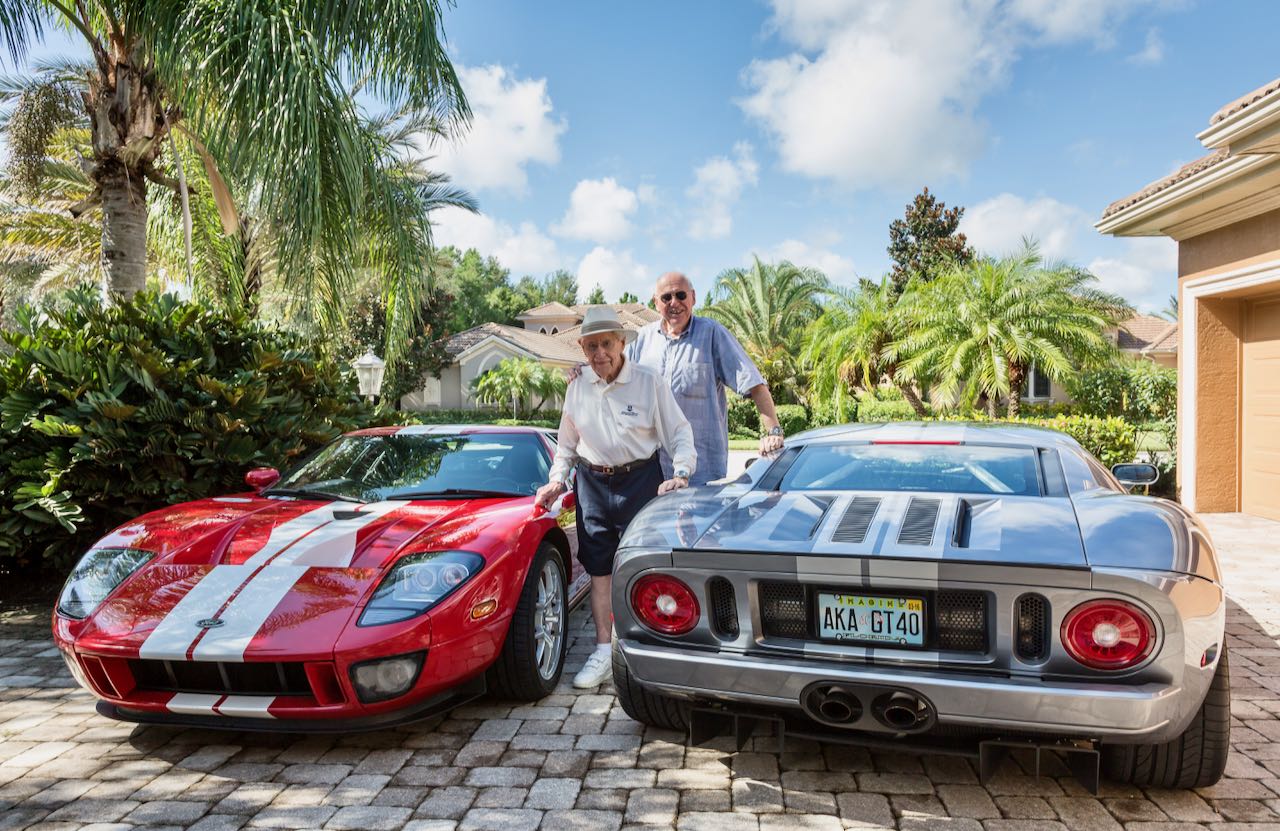 Being a Ford GT40 and Mark IV nerd, a longtime friend of the late Roy Lunn, above, the Godfather of the 1966-1969 Le Mans winning racecars ( Ford GT40 Mark II, Mark IV & GT40), and an owner of an ‘06 Tungsten Grey GT for some dozen years, I marveled over just how much historical and current valuation information Mark McCourt had packed into his feature article. I’m also fortunate to have Jim Padilla, the retired President of Ford during the GT program, and Chris Theodore, V.P. of Car Product Development, known as the father of the Ford GT, below, as friends. When the FORD 2005-’06 GT: ALL-AMERICAN SUPERCAR was launched, it was America’s Supercar. And, in many ways, it still is! Martyn Schorr.
Being a Ford GT40 and Mark IV nerd, a longtime friend of the late Roy Lunn, above, the Godfather of the 1966-1969 Le Mans winning racecars ( Ford GT40 Mark II, Mark IV & GT40), and an owner of an ‘06 Tungsten Grey GT for some dozen years, I marveled over just how much historical and current valuation information Mark McCourt had packed into his feature article. I’m also fortunate to have Jim Padilla, the retired President of Ford during the GT program, and Chris Theodore, V.P. of Car Product Development, known as the father of the Ford GT, below, as friends. When the FORD 2005-’06 GT: ALL-AMERICAN SUPERCAR was launched, it was America’s Supercar. And, in many ways, it still is! Martyn Schorr.
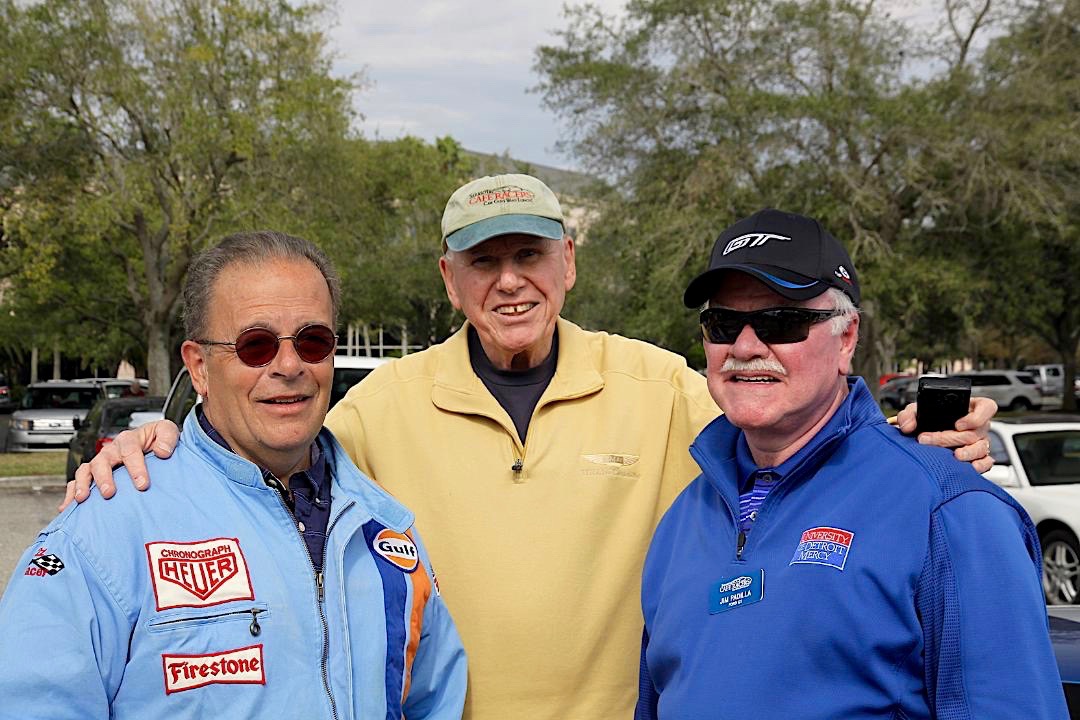 As the Ford Motor Company approached the year 2000 and began preparations to mark its centenary in 2003, its design executives were combing through the back catalog for inspiration. Ford debuted its 1999 Thunderbird show car to widespread applause, that retro-themed two-seater tastefully recalling the 1955-’57 originals and leading to the production 2002-’05 Thunderbird. The fifth-generation Mustang, codenamed S197, was in development and took major cues from the 1967-’68s; it would appear in concept form in 2003 and enter showrooms for 2005. And the ultimate postwar Ford to inspire a celebratory retro reboot was the Ferrari-beating Le Mans racing champion of the 1960s, the GT40 & Mark II, which begat the 2005-’06 GT.
As the Ford Motor Company approached the year 2000 and began preparations to mark its centenary in 2003, its design executives were combing through the back catalog for inspiration. Ford debuted its 1999 Thunderbird show car to widespread applause, that retro-themed two-seater tastefully recalling the 1955-’57 originals and leading to the production 2002-’05 Thunderbird. The fifth-generation Mustang, codenamed S197, was in development and took major cues from the 1967-’68s; it would appear in concept form in 2003 and enter showrooms for 2005. And the ultimate postwar Ford to inspire a celebratory retro reboot was the Ferrari-beating Le Mans racing champion of the 1960s, the GT40 & Mark II, which begat the 2005-’06 GT.
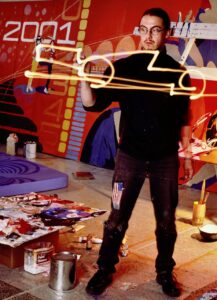 Like the Thunderbird before and Mustang that followed, the production GT was introduced to the public as a concept car — the 2002 GT40. This modern classic was the handiwork of Ford stylist Camilo Pardo, right, working under design chief J Mays, and it would soon roll onto the streets looking virtually unaltered. While the original GT40 was a racecar that sold to private owners in tiny numbers as a road-legal homologation special, the new-millennium GT would be a road car that could hold its own on a track against imported thoroughbreds like the contemporary Ferrari 360 Modena and Porsche Carrera GT. Its advertising tagline was apt — “The Pace Car for an Entire Company,” and 20 years of hindsight has proven this Blue Oval halo car earned its veneration through analog driver engagement, reliable supercharged V8 power, and timeless beauty.
Like the Thunderbird before and Mustang that followed, the production GT was introduced to the public as a concept car — the 2002 GT40. This modern classic was the handiwork of Ford stylist Camilo Pardo, right, working under design chief J Mays, and it would soon roll onto the streets looking virtually unaltered. While the original GT40 was a racecar that sold to private owners in tiny numbers as a road-legal homologation special, the new-millennium GT would be a road car that could hold its own on a track against imported thoroughbreds like the contemporary Ferrari 360 Modena and Porsche Carrera GT. Its advertising tagline was apt — “The Pace Car for an Entire Company,” and 20 years of hindsight has proven this Blue Oval halo car earned its veneration through analog driver engagement, reliable supercharged V8 power, and timeless beauty.
A FoMoCo-sanctioned conversion called the GTX1, below, conceived by Ford SVT engineer Kip Ewing and executed by Genaddi Design Group in Wisconsin, was available for a short time after debuting to rave reviews at the 2005 SEMA Show. It features four removable roof panels, a power-retractable backlite, and a redesigned clamshell deck with a glass panel to expose the engine. It allowed the car to be fully open, fully closed, or to run like a T-top, and all four panels could be stowed within the car. Special five-spoke alloy wheels, 19 x 9- and 20 x 11.5-inches front and rear, were included. It’s believed fewer than 50 GTs were altered.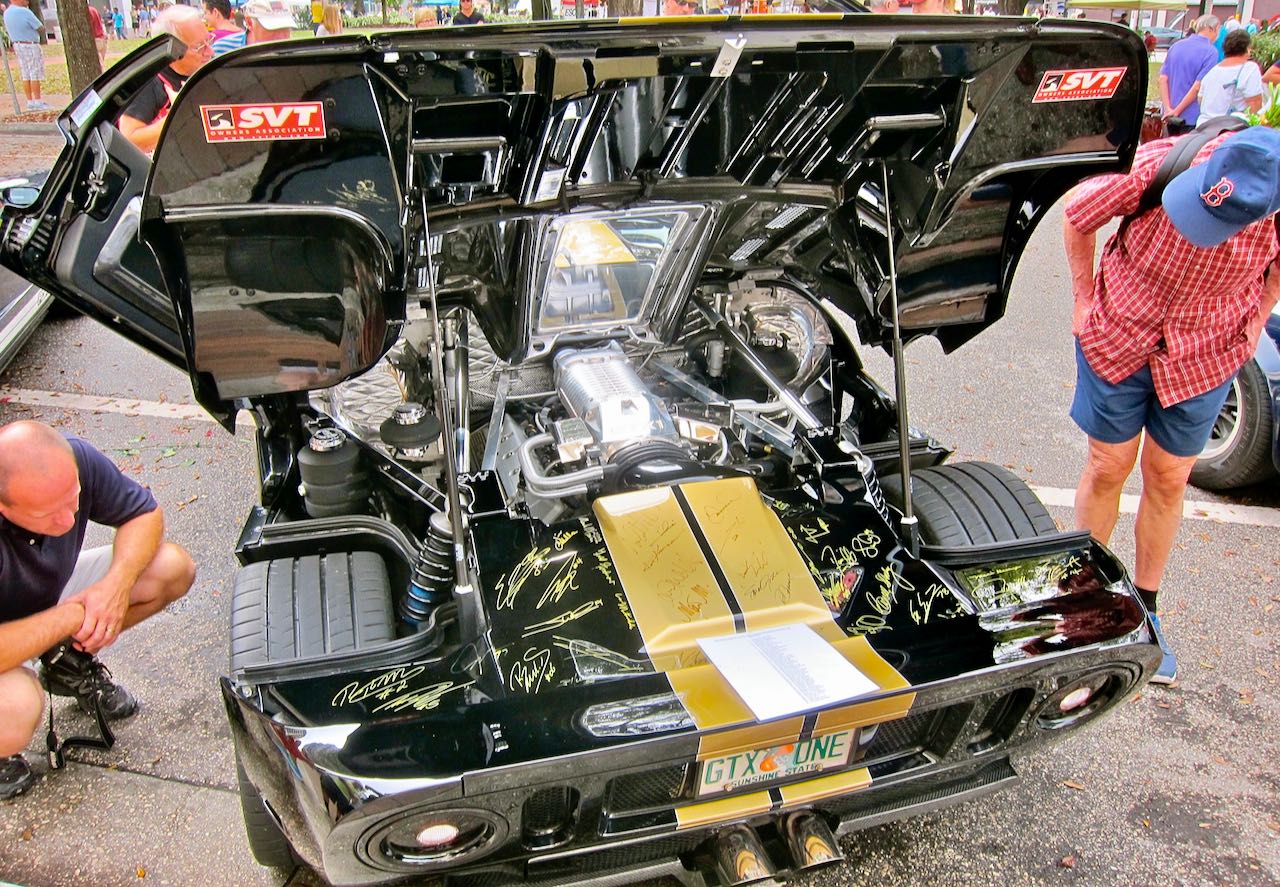 The FORD 2005-’06 GT: ALL-AMERICAN SUPERCAR balances its decades-old heritage with cutting-edge design work and the clever use of motorsports-grade materials. Ford engineers and technical specialists in the Special Vehicle Teams division collaborated with counterparts at Roush Industries (engine development and prototype construction), Mayflower Vehicle Systems (aluminum-body assembly), Lear Corporation (interior and electronics), and Saleen Special Vehicles (pre-driveline assembly and paint) to create this new model from the ground up in roughly two years, working hard to meet goals for styling, functional aerodynamics, occupant packaging, safety, emissions, and weight.
The FORD 2005-’06 GT: ALL-AMERICAN SUPERCAR balances its decades-old heritage with cutting-edge design work and the clever use of motorsports-grade materials. Ford engineers and technical specialists in the Special Vehicle Teams division collaborated with counterparts at Roush Industries (engine development and prototype construction), Mayflower Vehicle Systems (aluminum-body assembly), Lear Corporation (interior and electronics), and Saleen Special Vehicles (pre-driveline assembly and paint) to create this new model from the ground up in roughly two years, working hard to meet goals for styling, functional aerodynamics, occupant packaging, safety, emissions, and weight.
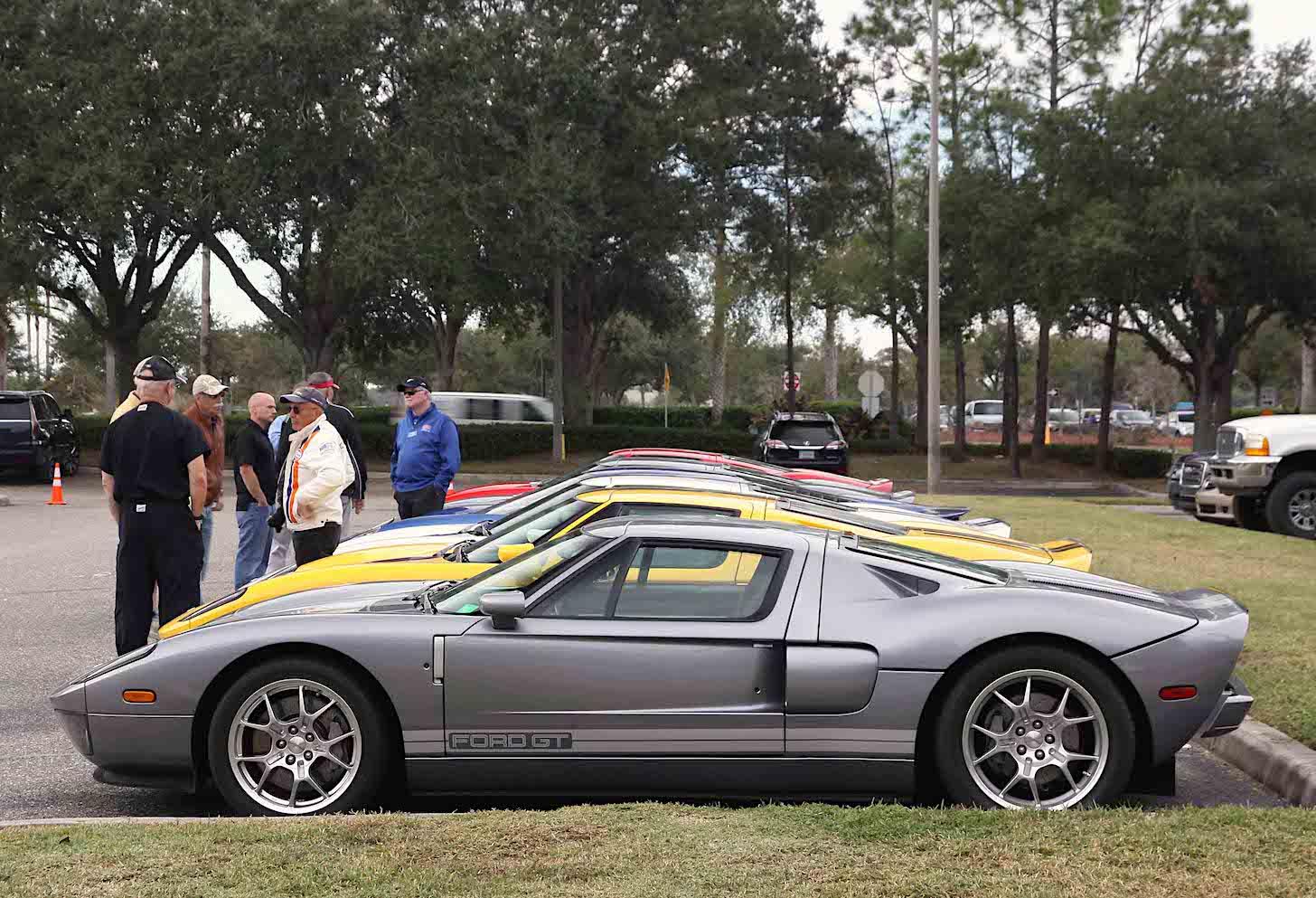 Despite being a bigger car — 18.3 inches longer, 6.9 inches wider, and 3.8 inches taller — than the diminutive 1960s GT40, the production GT sports an exterior that’s faithful to the 2002 show car, and so is its interior, which interprets the Le Mans racer through a modern lens. The seven-dial instrument panel, with a large tachometer directly in front of the driver and a matching speedometer angled at far right, made the final cut, as did the row of vertical toggle-switch controls, the satin metal center console containing an aluminum ball-topped manual shifter and heating-A/C controls, and the carbon-fiber-shell seats with circles recalling the GT40’s venting holes.
Despite being a bigger car — 18.3 inches longer, 6.9 inches wider, and 3.8 inches taller — than the diminutive 1960s GT40, the production GT sports an exterior that’s faithful to the 2002 show car, and so is its interior, which interprets the Le Mans racer through a modern lens. The seven-dial instrument panel, with a large tachometer directly in front of the driver and a matching speedometer angled at far right, made the final cut, as did the row of vertical toggle-switch controls, the satin metal center console containing an aluminum ball-topped manual shifter and heating-A/C controls, and the carbon-fiber-shell seats with circles recalling the GT40’s venting holes.
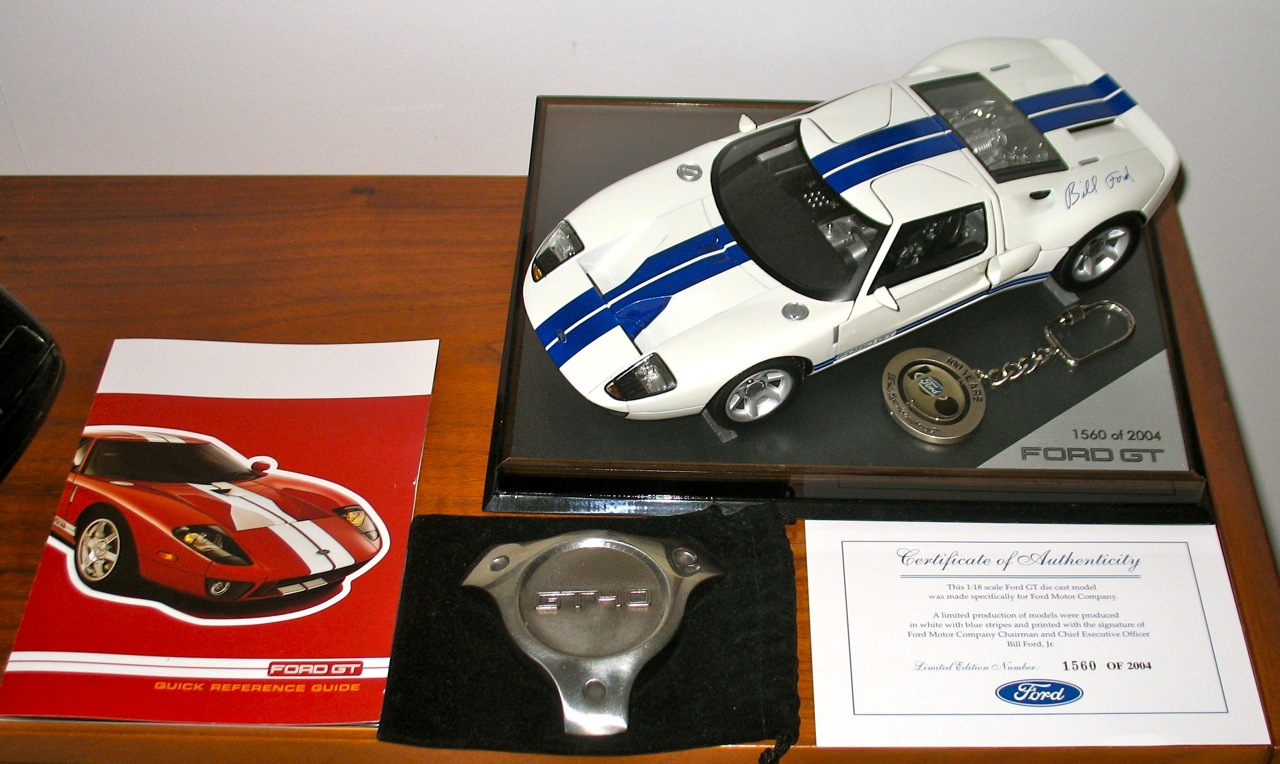 Continue reading FORD 2005-’06 GT: ALL-AMERICAN SUPERCAR @ https://www.hemmings.com/stories/heres-how-to-buy-the-best-example-of-fords-modern-classic-supercar-the-2005-2006-gt/?uemlid=e323c71347790f699ba35a9dc01d49ac3f938885a7df6321087c8c9b4c0dd333
Continue reading FORD 2005-’06 GT: ALL-AMERICAN SUPERCAR @ https://www.hemmings.com/stories/heres-how-to-buy-the-best-example-of-fords-modern-classic-supercar-the-2005-2006-gt/?uemlid=e323c71347790f699ba35a9dc01d49ac3f938885a7df6321087c8c9b4c0dd333
